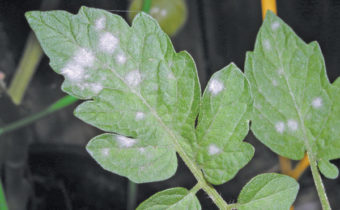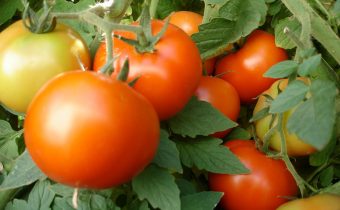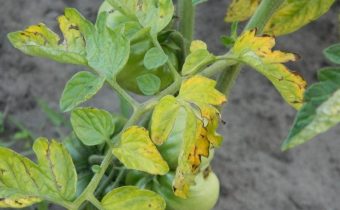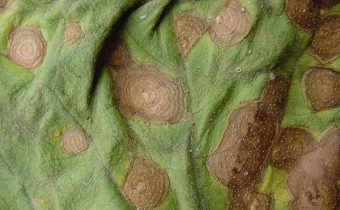Kvadris fungicide for tomatoes
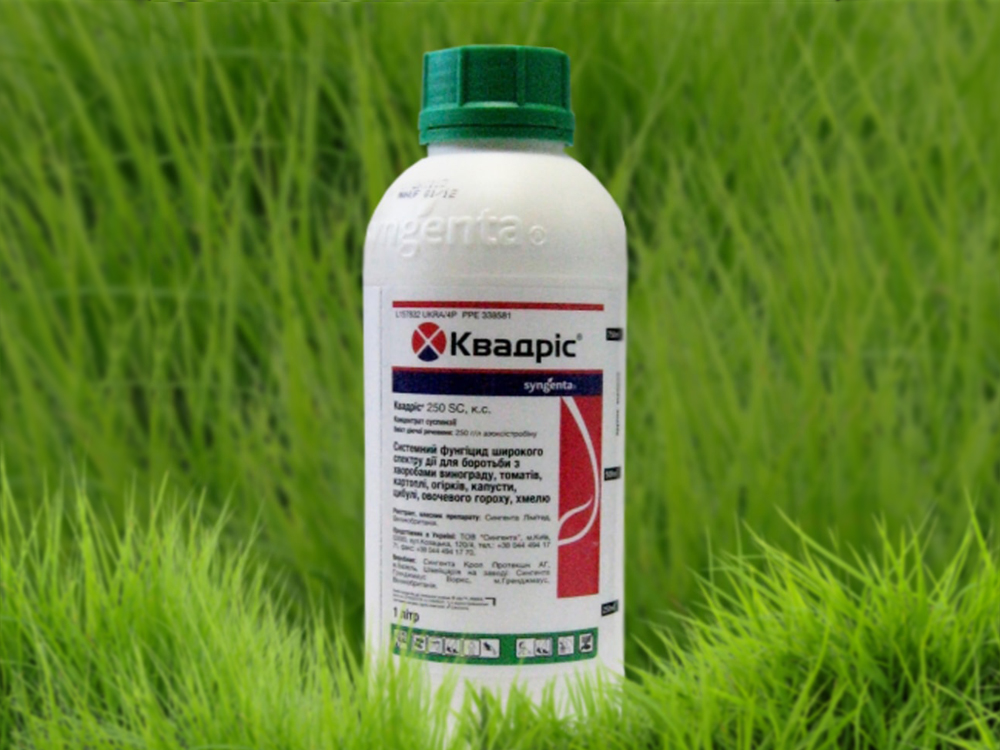
To combat tomato diseases that are caused by the spread of pathogens is very difficult. At high humidity and air temperature, spores of fungi multiply rapidly, causing irreparable damage to plants. To help vegetable growers, biologic chemists have created fungicide preparations that suppress the development of pathogens. Contact Microbial Neutralizer “Kvadris” is the best tool that protects tomatoes from fungal spores and pathogens.
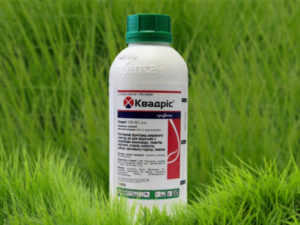
Benefits
Thanks to the system-contact mechanism of action, the tool has advantages in the form:
- rapid defeat and neutralization of fungal spores;
- the distribution of the active substance inside the plant cells, forming a protective membrane on the surface of the leaves, which prevents re-infection;
- the integrity of the process of vital activity of microorganisms in the soil, carrying out the process of its formation and self-purification;
- low toxicity when placed on the surface of plants. Fruit harvest after processing can be harvested after 4-5 days;
- effects on pathogens in any precipitation and irrigation;
- permitted combination of the drug with any biological insecticides, fungicides, growth stimulantscomplex fertilizers;
- effects of the active substance on pathogenic microspores at low temperatures from +2 degrees;
- stimulation of tomato photosynthetic segments that produce organic matter in plants;
- enhance plant immunity.
disadvantages
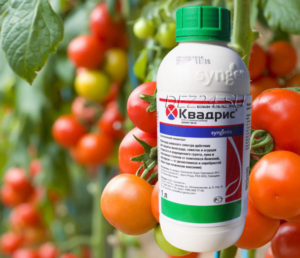
With a large number of advantages, the drug has disadvantages:
- the active substance, poisoning the respiratory poisons of the cells of parasitic fungi, remains in the inflorescences of tomatoes. Therefore, in the stage of blooming flower brushes, the drug can not be used;
- being of low toxicity to humans, the product is dangerous for birds, freshwater and marine fish;
- frequent use of the drug causes resistance in pathogens. Using the tool more than three times contributes to the emergence of mutation of fungal cells, which increases their viability.
In order not to cause pathogen resistance to the Quadris action, the drug should be alternated with other translaminar fungicides.
Purpose
You can treat tomatoes with the preparation not only from parasitic fungi, but also from viral infections:
- tomato fungal disease caused by the spread of certain types of microscopic parasitic fungi - powdery mildew;
- brown powdery mildew, deformation of apical shoots, leaf curling when the plant is damaged by a spiofeet;
- when the mycelium organisms of the discharge of oomycetes, differing in their pathogenic properties, appear on tomatoes - macrosporium fungus and development of macrosporosis;
- with the development of chlorotic in tomatoes due to curly virus;
- when covering the lower part of the foliage of tomatoes with light brown velvety patina due to the defeat of plants with a fungal disease of brown olive spot;
- with the development of brown spots near the stem of a tomato due to plant damage fomozom;
- in case of darkening and rotting of the stem due to the penetration of black leg mushrooms into the root neck of a tomato spore;
- the appearance of black spots on tomato bushes and the development of top rot;
- withering of the upper leaves, exposing the central stem, damage to the fruits of dark gray depressed spots due to the development of anthracnose;
- with the defeat of old leaves that are on the ground with brown spots due to the attack of pathogens septoria;
- gray-white coating of the stem of tomatoes in case of gray rot development;
- the presence of wet putrefactive spots on all above-ground organs of tomatoes that have arisen due to the spread of white rot spores;
- the formation of old leaves of chlorosis and necrosis, the gradual rejection of the root system due to the development of verticilllosis;
- deformation of the root collar, decay of the vegetative mass due to the development of southern late blight.
The mechanism of action of the active substance
The active substance, azoxystrobin, penetrates from the treated side of the leaf to the untreated one, providing protection on both sides. Within two weeks, the whole plant is under the protection of the substance, including new leaves and stepchildren growing after spraying. Azoxystrobin is almost completely distributed throughout the tomato bush for forty minutes after treatment.
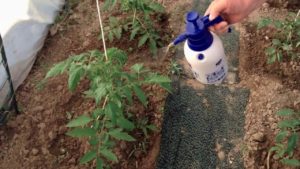
The organic compounds udemansin and strobilurin that are included in the preparation move acropetally through the vessels of the plant, detrimentally affecting only harmful fungal microorganisms. Useful microflora after spraying does not die. Chemical elements migrate through the plant, finding foci of fungal infection, inhibit lipid synthesis. Block a further increase in mycelium and sporulation. Udemancin is absorbed by a layer of wax on the leaves, due to which it is not washed off with water. Azoxystrobin has a good ecotoxicological profile, it quickly decomposes in the soil, and its toxicity is minimal for mammals.
Watering tomatoes can be an hour after spraying "Kvadrisom", because by this time the drug has completely penetrated into the plants.
Instructions for use
The working solution of "Quadrice" is diluted by the standard method, applied immediately after preparation. Particularly effective are preventive spraying after identifying the first signs of fungal and infectious lesions.
| Disease | Symptoms | The consumption rate of the working solution | Processing time |
| Mealy dew | Single whitish spots on the top of the leaves, which are easily erased with your fingers. After a few hours again appear on the leaves. | 0, 1% per 1 liter of water.
For one hundred square meters use no more than 40 liters of solution. |
The first one is prophylactic before the start of the massive blooming of flower brushes.
The second - at the time of pouring the fruit. |
| American powdery mildew | The defeat of the plant organs of tomatoes with a spiderweb mealy spawn, which causes leaf curling and necrosis. As well as cracking and rotting of fruits. | 0, 06% per 1 liter of water. Per one hundred to spend 6-7 liters of solution | The first - preventive tillage before planting seedlings.
The second and third - by foliage with an interval of 15-18 days. |
| Macroscopic | The manifestation on all aboveground organs of tomato dark brown spots with patterns, drying and leaf necrosis. | 0.07% per liter of water. Consumption per hundred -4-5 liters of solution. | The first is seed dressing.
The second is the preventive spraying of the soil before planting the seedlings. The third - until the mass flowering of tomatoes. |
| Chlorotic curliness | Twisting the top of a tomato bush, deformation and color change of foliage. | 0.03% per liter of water.
The flow rate of the working fluid should not exceed 20 liters per hundred. |
The first is the disinfection of tomato seeds.
The second is prophylactic, 15 days after transplanting. The third - in 14-15 days. |
| Southern and common late blight | The formation of light gray spots on the upper part of the leaves and fruits of tomatoes, drying and necrosis of the foliage. | 0, 03% per 1 liter of water. The working fluid consumption is 15 liters per one hundred square. | The first one is prophylactic 15-20 days after transplanting.
The second at the time of pouring fruit. |
| Fomoz | Damage of leaves, stems and fruits in dark brown areas with the formation of concentric rings in them. | 0.05% -0.06% per liter of water. The consumption of working solution 20l-25l per hundred square. | The first - before the first ovaries.
The second - in 14 days. |
| Blackleg | The appearance of dark brown spots on the bottom of the stem. Inflammation and necrosis of the root system. | 0, 12% per 1 liter of water. Application rate per one hundred parts of not more than 40 liters. | The first is seed dressing.
The second is preventive soil treatment before planting seedlings. The third - 20 days after survival of young seedlings. |
| Vertex Rot | The appearance of brown spots on the fruit with a liquid structure. | 0, 03% per 1 liter of water. The consumption rate of the working solution is 15 liters per hundred. | The first prophylactic is before the start of mass flowering.
The second is when there are signs of top rot 5 days before harvest. |
When processing tomatoes from the top rot, together with the drug "Kvadris" in 1 liter of water to dilute 3 g of potassium chloride and 1 g of boric acid.
Toxicity and storage conditions
In the manufacture and use of the working solution to use individual protective equipment. Since, despite the low toxicity of the drug, its active ingredient at elevated temperatures evaporates, penetrating into the human body through the skin and hair.
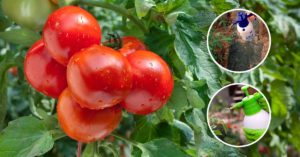
Reliable storage of the drug is achieved by its safety in places without sunlight. And also without access to the facility for young children and pets. Food should not be saved near the packaging. Permissible air temperature during storage is from -4 to +36 degrees. Observing the rules of storage, hermetically sealed drug stored for 3 years.
Recommended Analogs
Similar qualities have drugs:
- "Phoenix";
- "Derozal";
- Vmal Trust;
- "Strobe";
- "Consento";
- Revus Walter;
- Tattu;
- Previkur Enerdzhi;
- Folicho;
- Prozaro.
According to reviews of vegetable growers, the drug "Kvadris" is a good tool for dealing with many pathogenic diseases of tomatoes. And also safe and convenient means in use.


